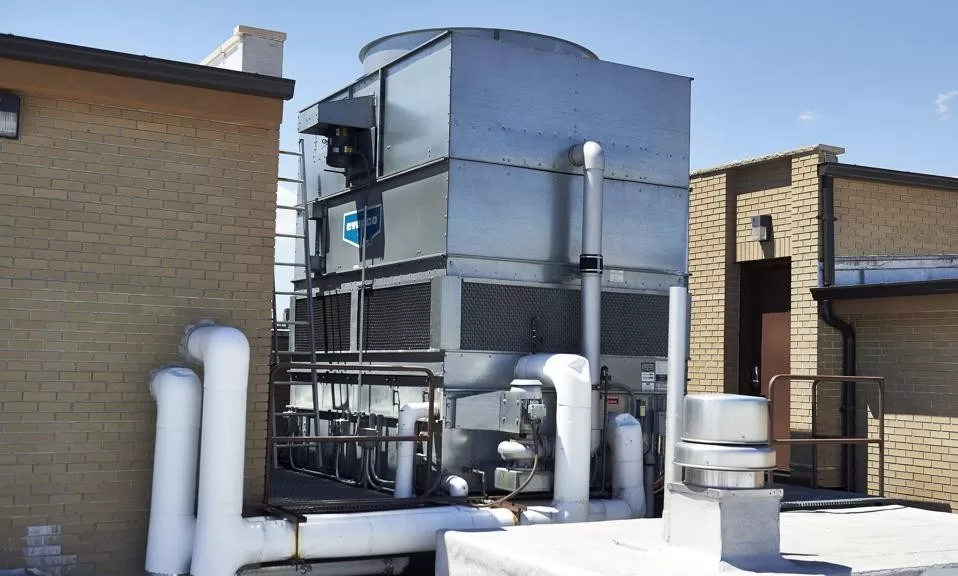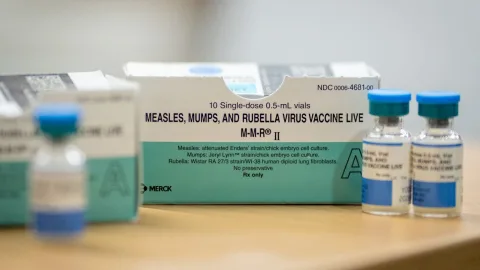The recent Legionnaires’ disease outbreak in New York City has raised significant public health concerns, particularly after the unfortunate report of a fourth death linked to the illness. Since the outbreak’s inception in late July, over 101 confirmed cases have been identified, with 15 individuals currently hospitalized as authorities work to curtail the spread. The NYC Health Department is actively investigating cooling towers in Central Harlem for the presence of Legionella bacteria, which has been identified as a primary source of infection. Amid growing concern about the rising legionnaires disease death toll, residents are urged to remain vigilant and seek medical attention if flu-like symptoms appear. Additionally, awareness of other emerging health threats—such as avian flu in California and local malaria cases—underscores the critical need for public vigilance regarding infectious diseases in the community.
In the world of public health, a series of alarming infections can often arise, including the recently reported outbreak of Legionella, which has left many concerned about community safety. This bacterial infection, primarily associated with severe pneumonia-like symptoms, has prompted health officials to act swiftly to investigate potential sources of the outbreak. As health authorities grapple with rising numbers, other pressing health issues, such as avian influenza detected in California and the potential for locally acquired malaria cases, illustrate the myriad challenges facing public health systems today. Furthermore, the need for timely responses to emerging threats like the New World screwworm also reflects the interconnected nature of our health landscape. By sharing information on these vital issues, communities can better prepare for and mitigate the impact of such outbreaks.
Understanding the Legionnaires’ Disease Outbreak
The recent outbreak of Legionnaires’ disease in New York City has raised serious public health concerns, particularly with the reported death of a patient, bringing the total death toll to four. To date, over 100 cases have been confirmed, with the Central Harlem area being the focal point of investigations. The New York City Health Department is taking proactive measures by testing water samples from various cooling towers in the region, since Legionella bacteria thrive in such conditions. Despite these troubling statistics, health officials emphasize that the overall risk to the public remains low, and residents are urged to seek medical evaluation if they experience flu-like symptoms.
The current Legionnaires’ disease outbreak highlights the importance of ongoing public health monitoring and effective communication. Health authorities are meticulously sampling and treating cooling towers that test positive for Legionella, which underscores a vital preventive strategy. This proactive approach is essential in curbing the spread of Legionella infections, particularly as the health department collaborates with local hospitals to ensure that patients receive timely diagnoses and appropriate treatment. As the situation evolves, public awareness and education about the disease’s symptoms remain crucial for community safety.
The Impact of Avian Flu in California
Recently, the USDA has reported a detection of H5N1 avian influenza at a live-bird market in Los Angeles County, California. This incident marks a concerning return of avian flu reports in the region, especially as these outbreaks can have severe implications for both bird populations and public health. The presence of avian influenza not only poses risks for poultry but can also potentially transfer to humans, necessitating ongoing surveillance and response measures from health and agricultural authorities.
In light of this detection in California, officials are closely monitoring bird populations to prevent further spread of the virus. With the ability of H5N1 to severely affect avian species, the USDA’s Animal and Plant Health Inspection Service is ready to implement necessary containment measures. Consumers are encouraged to buy poultry products from reputable sources and remain vigilant, particularly as sporadic detections appear in the local livestock populations. Continued investigations will aid in understanding the full impact of avian flu in California.
The Fight Against New World Screwworm Infestation
The New World screwworm presents a significant threat to U.S. livestock, requiring decisive measures to manage its spread. Following an announcement by the USDA, a new investment of $100 million aims to combat the screwworm problem effectively. This includes innovative strategies and the establishment of a sterile-fly production facility that can produce up to 300 million sterile flies weekly. These efforts are critical in reducing screwworm populations, as the Cochliomyia hominivora fly can inflict devastating harm on livestock over a substantial area.
As the USDA continues to track the screwworm’s spread, collaboration across borders becomes vital. These initiatives not only protect livestock health but also secure the agricultural economy’s sustainability. Farmers and ranchers are encouraged to adopt preventive measures and report any signs of screwworm infestation promptly. As containment efforts unfold, timely communication and education will play a fundamental role in safeguarding livestock from potential infestation.
Emerging Local Malaria Cases in the US
Recent reports indicate the emergence of locally acquired malaria cases in New Jersey, marking a notable public health concern since it has been over three decades since the last confirmed case in the state. Public health officials are investigating the situation closely to identify any potential sources that might have contributed to the transmission of malaria, despite these mosquito-borne illnesses being rare in this region. The Anopheles mosquitoes that can transmit malaria exist within New Jersey, although health officials maintain that the risk remains low.
Similar cases have been reported in states like Washington, highlighting an urgent need for vigilance and public awareness regarding mosquito-transmitted diseases. As health departments coordinate with the CDC, residents are advised to take preventive measures against mosquito bites. This includes using repellents, wearing protective clothing, and eliminating standing water around homes to reduce mosquito breeding grounds. Community engagement and awareness are essential in preventing further occurrences of malaria.
The Role of COVID-19 Treatments in Public Health
With the ongoing pandemic, the recent announcement by Invivyd regarding a new monoclonal antibody treatment for COVID-19 is a significant step forward in preventive care. The FDA’s guidance on a rapid approval pathway reflects the importance of innovative medical treatments in enhancing population health strategies. This low-dose, intramuscular approach will provide a potential new line of defense against COVID-19, particularly for individuals aged 12 and older.
As we look to the future of public health, it is imperative to integrate new treatment options with existing vaccination strategies. This dual approach can help mitigate the effects of COVID-19 and provide more accessible care for vulnerable populations. Continuous collaboration between pharmaceutical companies and regulatory agencies will be crucial in ensuring that effective treatments reach those in need, ultimately fostering a healthier community.
Frequently Asked Questions
What is the current death toll related to the Legionnaires’ disease outbreak in New York City?
As of the latest health update, the death toll related to the Legionnaires’ disease outbreak in New York City has reached four. This outbreak has involved a total of 101 confirmed cases, with fifteen individuals currently hospitalized.
How is the Legionnaires’ disease outbreak being investigated by health officials?
Health officials are investigating the Legionnaires’ disease outbreak by sampling and testing water from cooling towers in Central Harlem, where the outbreak was first reported. Towers that test positive for Legionella bacteria are treated as per health department mandates.
What symptoms should individuals look out for during the Legionnaires’ disease outbreak?
Individuals should be vigilant for flu-like symptoms during the Legionnaires’ disease outbreak and seek medical attention promptly if they experience such symptoms. While the overall risk has been stated as low, timely medical evaluation is crucial.
What preventive actions are taken against the Legionnaires’ disease outbreak in New York City?
In response to the Legionnaires’ disease outbreak, New York City health officials have mandated that any cooling towers testing positive for Legionella bacteria undergo necessary treatments to mitigate further risks.
How does the current Legionnaires’ disease outbreak compare to past outbreaks in the US?
The current Legionnaires’ disease outbreak in New York City is part of a continuing trend of localized outbreaks in urban areas, similar to previous cases. Each outbreak presents unique challenges, prompting coordinated responses from health departments to manage and prevent further infections.
What is the importance of reporting flu-like symptoms during the Legionnaires’ disease outbreak?
Reporting flu-like symptoms during the Legionnaires’ disease outbreak is crucial for early diagnosis and management of the infection, as timely medical intervention can significantly improve outcomes and reduce the spread of Legionella.
What areas are being monitored for the Legionnaires’ disease outbreak in New York City?
Monitoring for the Legionnaires’ disease outbreak in New York City focuses on five zip code areas in Central Harlem, where health officials are actively testing cooling towers for Legionella bacteria presence.
What public health advice has been issued related to the Legionnaires’ disease outbreak?
Public health officials are advising individuals in impacted areas to remain vigilant, monitor for symptoms, and seek immediate medical attention if they experience flu-like symptoms during the ongoing Legionnaires’ disease outbreak.
What measures are being taken for cooling towers in response to the Legionnaires’ disease outbreak?
In response to the Legionnaires’ disease outbreak, cooling towers that test positive for Legionella are being treated to eliminate the bacteria, ensuring the safety of the surrounding community.
Can Legionnaires’ disease be treated, and what should infected individuals do?
Yes, Legionnaires’ disease can be treated with appropriate antibiotics. Individuals who suspect they have been infected, especially during the ongoing outbreak, should seek medical care promptly for diagnosis and treatment.
| Key Points | Details |
|---|---|
| Legionnaires’ Disease Outbreak | A patient has died from the outbreak in New York City, increasing the death toll to four. Total confirmed cases are now 101. |
| Hospitalizations | Currently, 15 individuals are hospitalized due to the outbreak. |
| Investigation Area | Health officials are testing water from cooling towers across five zip codes. |
| Treatment Protocols | Cooling towers that test positive for Legionella undergo treatment as required. |
| Public Health Advisory | The overall risk remains low, but individuals with flu-like symptoms should see a doctor. |
Summary
The recent Legionnaires disease outbreak has become a pressing public health issue in New York City, with four confirmed deaths and over 100 reported illnesses. Health officials are actively conducting investigations and testing to identify sources of Legionella bacteria in the area. The findings from these assessments will inform necessary health protocols to mitigate further risks. Vigilance is critical as the outbreak unfolds, emphasizing the importance of seeking medical attention for flu-like symptoms.
The content provided on this blog (e.g., symptom descriptions, health tips, or general advice) is for informational purposes only and is not a substitute for professional medical advice, diagnosis, or treatment. Always seek the guidance of your physician or other qualified healthcare provider with any questions you may have regarding a medical condition. Never disregard professional medical advice or delay seeking it because of something you have read on this website. If you believe you may have a medical emergency, call your doctor or emergency services immediately. Reliance on any information provided by this blog is solely at your own risk.








